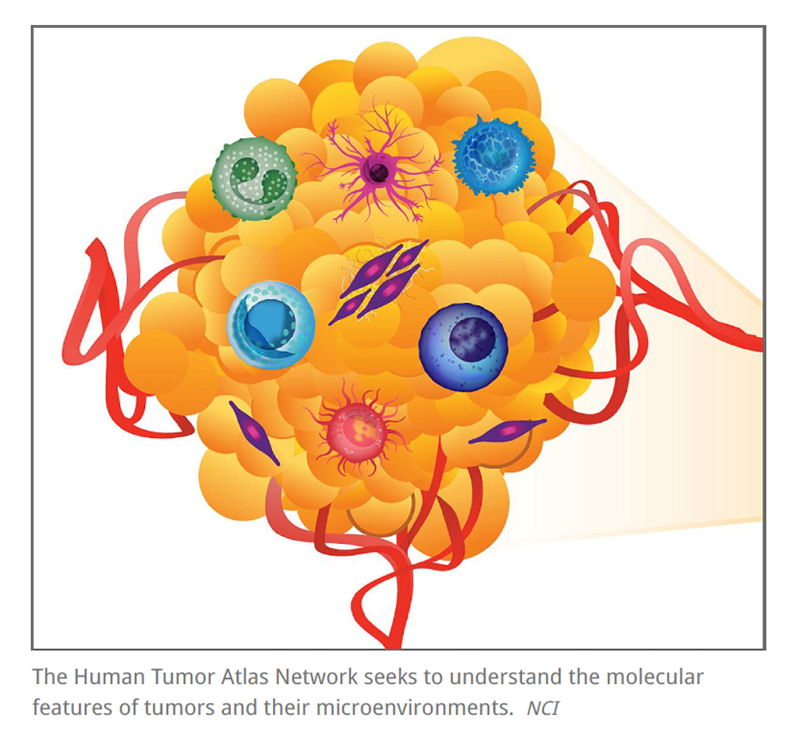NIH-Funded Scientists Find Clues to Precancer and Tumor Biology
 New insights from multiple studies provide critical information on how cancer tumors develop, spread, and respond to treatments. The 10 studies from the Human Tumor Atlas Network (HTAN), a National Institutes of Health (NIH)-funded Cancer Moonshot initiative to construct three-dimensional maps of human tumors, were published across several Nature journals.
New insights from multiple studies provide critical information on how cancer tumors develop, spread, and respond to treatments. The 10 studies from the Human Tumor Atlas Network (HTAN), a National Institutes of Health (NIH)-funded Cancer Moonshot initiative to construct three-dimensional maps of human tumors, were published across several Nature journals.
Several studies explore the role of the tumor microenvironment and the immune system in promoting the spread of cancer and its resistance to treatment. Three studies map the trajectory of precancerous colorectal tissues toward cancer by measuring the contributions of multiple molecular and cellular events. Multiple new HTAN papers describe the development of innovative single-cell technology and analysis platforms. An accompanying research briefing by W. Kimryn Rathmell, MD, PhD, director of NIH’s National Cancer Institute (NCI), and Dinah Singer, PhD, NCI deputy director for scientific strategy and development, discusses the history, progress, and future of HTAN.
Launched in 2018, HTAN constructs three-dimensional maps of human tumors that capture their molecular features and surrounding microenvironments over time. The work is being done by teams of investigators from research institutions across the country using a variety of technologies and computational approaches to study tumors at the single-cell level. This comprehensive, publicly available resource aims to help researchers better understand the development and progression of cancer to inform its prevention and treatment. The first tumor atlas studies from this initiative were published in 2020 and 2021.